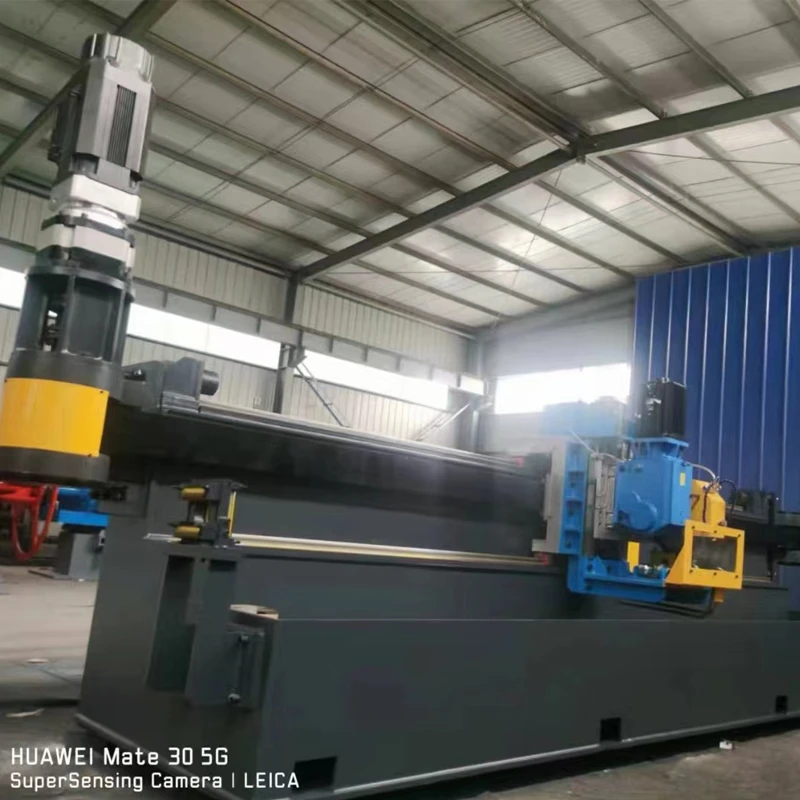Understanding the Process and Benefits of Aluminium Roll Forming Techniques
Aluminium Roll Forming An Overview
Aluminium roll forming is a manufacturing process that involves the continuous bending of aluminium sheets into desired cross-sectional shapes. This innovative technique has gained popularity in various industries due to its efficiency, versatility, and the unique properties of aluminium itself. The aluminium roll forming process offers numerous advantages, including weight reduction, corrosion resistance, aesthetic appeal, and enhanced structural integrity, making it an ideal choice for numerous applications.
The Process of Aluminium Roll Forming
In the roll forming process, a flat strip or sheet of aluminium is fed through a series of rollers that gradually shape it into the desired profile. This process is highly controlled and produces components with consistent dimensions and high precision. The rollers are designed specifically to form the aluminium into complex shapes, which can be customized to meet specific design requirements. The efficiency of roll forming allows for the production of long lengths of a uniform profile, which can be easily cut to size depending on the application.
The operation begins with the selection of the appropriate aluminium alloy, as different alloys possess varying mechanical properties and characteristics suited for specific applications. After the alloy is chosen, it undergoes a heat treatment process if required, enhancing its malleability and making it easier to shape. Then, the aluminium is passed through the roll forming line, where it is shaped continuously until the final profile is achieved.
Advantages of Aluminium Roll Forming
One of the most significant advantages of aluminium roll forming is its ability to produce lightweight components without compromising strength. Aluminium is well-known for its high strength-to-weight ratio, which is critical in industries such as automotive and aerospace, where weight reduction translates to fuel efficiency and performance improvements. Additionally, the corrosion resistance of aluminium ensures that the finished products remain durable and resistant to the elements, extending their lifespan and reducing maintenance costs.
aluminium roll forming

Aluminium roll forming also permits a wide range of design possibilities. The flexibility of the process allows manufacturers to create intricate shapes and profiles that can be tailored to fit specific applications, such as building materials, structural components, and decorative elements. Furthermore, the seamless nature of roll-formed products enhances their aesthetic appeal, making them suitable for applications where appearance is paramount.
Applications of Aluminium Roll Forming
The applications of aluminium roll forming are vast and varied. In the construction industry, roll-formed aluminium is common in applications such as roofing, wall cladding, and window frames. These lightweight yet strong components can meet the stringent building regulations while providing superior thermal performance.
In the automotive sector, roll-formed aluminium parts are increasingly used due to their ability to reduce vehicle weight, thereby improving fuel efficiency and emissions. Components such as chassis parts, supports, and brackets are often produced through roll forming, contributing to overall performance enhancements of modern vehicles.
Moreover, the electrical and consumer goods industries benefit from aluminium roll forming as well. Components for lighting fixtures, electronics enclosures, and appliances often utilize roll-formed aluminium because of its lightweight nature and ability to dissipate heat efficiently.
Conclusion
In conclusion, aluminium roll forming is a dynamic and efficient manufacturing process that has reshaped the way various industries approach product design and production. Its advantages are evident across multiple sectors, driving innovations that favor sustainability, durability, and performance. As technology continues to advance, the potential applications and benefits of aluminium roll forming are expected to expand, solidifying its role as a critical process in modern manufacturing. Whether for structural, aesthetic, or functional purposes, aluminium roll forming remains a key player in the evolution of materials engineering.
-
High Frequency Straight Seam Welded Pipe Production Line-BzZhou Xinghua Machinery Equipment Manufacturing Co., LTD.|line pipe steel&welded gas pipeNewsJul.30,2025
-
High Frequency Straight Seam Welded Pipe Production Line-BzZhou Xinghua Machinery Equipment Manufacturing Co., LTD.|High Precision&Automated SolutionsNewsJul.30,2025
-
High Frequency Straight Seam Welded Pipe Production Line - BzZhou Xinghua Machinery Equipment Manufacturing Co., Ltd.NewsJul.30,2025
-
High Frequency Straight Seam Welded Pipe Production Line-BzZhou Xinghua Machinery Equipment Manufacturing Co., LTD.|Precision Welding, High EfficiencyNewsJul.30,2025
-
High Frequency Straight Seam Welded Pipe Production Line|BzZhou Xinghua|Precision Welding&EfficiencyNewsJul.30,2025
-
High Frequency Straight Seam Welded Pipe Production Line - BzZhou Xinghua|Precision Engineering&EfficiencyNewsJul.30,2025


